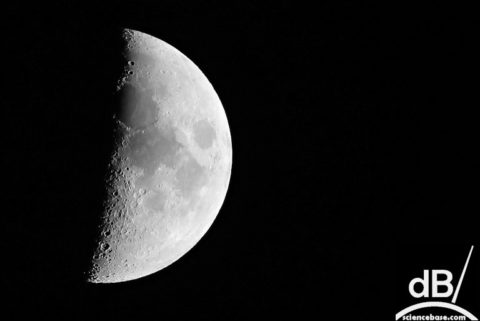The Moon was in its first quarter phase earlier this week. Looking beautiful, hanging in the sky, at dusk. If I see it, I snap it. So, with my trust camera and a biggish lens (150-600m), I fired off a couple of shots. Cropped the image straight out of the camera to “zoom” in even further and to give the shot a nice composition, adjusted the histogram using curves in my photo editor, applied a little sharpening (actually an unsharp mask process) and a couple of other tweaks, just as one would in the darkroom with wet photography and an enlarger.

I posted the shot to social media and got a few complimentary comments and one sci-curious question from a physicist friend, Richard Gymer:
I reckon the smallest craters that I can see on your photo are about 20 km diameter, and the largest - that suspiciously round 'sea' - is over 600 km in size...
What did he mean by “suspiciously round”, I wondered:
The scientist in me looks at the way the craters are distributed and says, 'The largest craters are under smaller craters: maybe the distribution of size of objects landing on tyhe moon has changed with time? The most recent events have been getting smaller. And we know that crater formation is a (mercifully) rare event on Earth these days. When were these craters formed?
He wasn’t having an Archimedean “Eureka!” moment, but more of an Asimovian “That’s funny!”* I had a quick look for a NASA video showing the potted and pock-marked history of the Moon and found this nice evolution, showing its early cooling (when it should also be shown being bombarded), through the early, massive bombardment with large objects, and eventually bombardment with smaller asteroids and other objects, leaving the moon as we see it today. Who can remember the last time a large space rock hit the moon?
*By the way, nobody is sure whether the quote “The most exciting phrase in science is not “Eureka!”, but “that’s funny!” was Isaac Asimov, perhaps even Alexander Fleming, or neither.